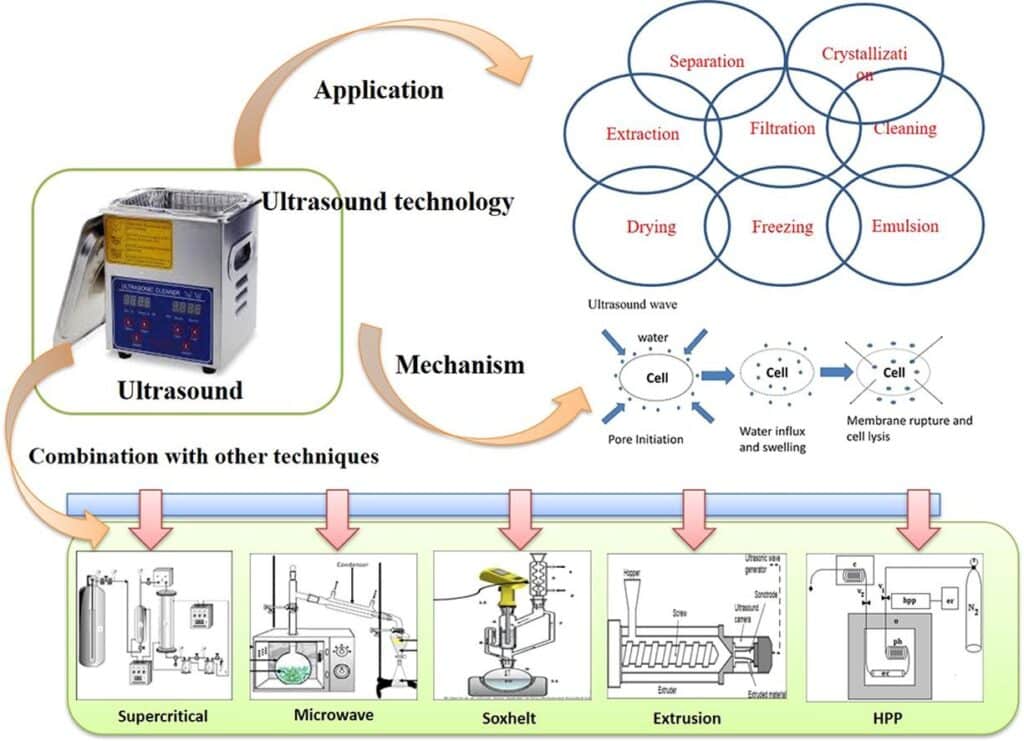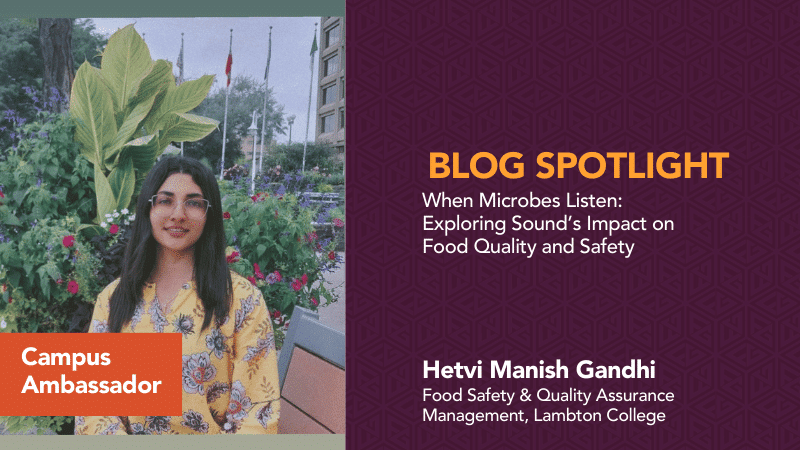When Microbes Listen: Exploring Sound’s Impact on Food Quality and Safety
Everything in this world has its own novel energy and vibrations. Us humans have ears and
central nervous system to understand that microbes just feel and act accordingly. This way by
which microbes react is termed as Quorum sensing. Microbes react by altering membrane
permeability, modifying protein folding and influencing gene expression.
According to the study done by Sarvaiya and Kothari (2016), bacteria such as E. coli and S.
aureus react to music like classical and rock. As a result, the change in growth rate was found.
Also, devotional chanting can reduce the growth of pathogenic organisms. Diving into the genes, sound waves are found to stimulate mechanosensitive ion channels in membranes. Hence, the transcription and translation are affected.

Applications where ultrasonication can be used in the food industry (Singlas and Sit, 2021)
Applications of Sound in the Food Industry
Now let’s understand how we can implement this concept into food industry. Firstly, sounds can influence fermentation by speeding it up, enhancing flavours and improving probiotic viability. Secondly, as mentioned above some sound like ultrasound can also reduce the growth of microbes using which food industry can be benefited as spoilage can be reduced. To exemplify, cold pasteurization method also known as sonication. Lastly, usage of low frequency sound emitters near root or beds zone are proven to enhance nutritional quality of food and yielding to a healthier crop.
To put this in a nutshell, microbes are capable to respond to sound by altering growth and gene expression. This interaction is proved to be useful in food science because it improves safety, flavor and nutrition.

About the author: Hetvi Manish Gandhi, a Microbiology graduate and Food Safety & Quality Assurance Management student, combines scientific expertise with industry experience. With a background in laboratory research and food industry operations, she is passionate about advancing food quality, safety, and health. Through her work and writing, she strives to make science practical, relatable, and impactful in everyday life.


leave your comment